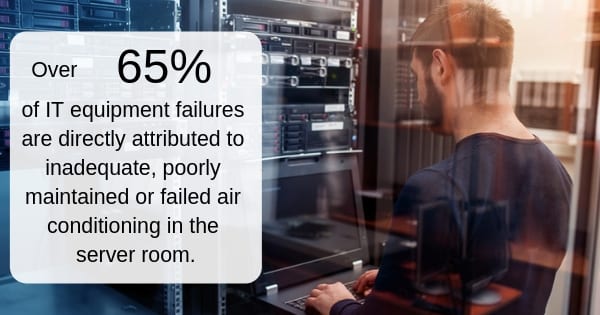
As technology continues to advance, businesses are becoming more dependent on data centers. By relying on a separate site that contains multiple data racks and server racks, companies can greatly improve and increase their computing capabilities; this, in turn, allows for faster and more efficient operations, which can be an invaluable differentiating factor in tech companies throughout the world.
However, when you cram vast amounts of electronics racks into a single building, things tend to run hot. Adequate cooling systems must be put in place to prevent equipment from overheating; since over 65% of IT equipment failures occur from insufficient cooling capabilities, your company quite literally depends on effective thermal containment systems to continue functioning.
Making A Choice
Two of the most common forms of cooling in data centers are hot aisle containment and cold aisle containment. Both of these systems offer a way to funnel the excess heat out and away from the server and data racks while bringing cooler air in, but vary slightly in method. Let’s look at the benefits of each.
- Hot Aisle Containment: With hot aisle containment systems, the open area of the room is a cold environment. Leakage from raised floor openings goes into the cold space, creating a (generally) more effective form of cooling. This system is inherently more forgiving for network racks and standalone equipment (like storage cabinets) because they’ll be able to sit in the lower-temperature area of the room. Additionally, these systems do well in slab environments because they flood the data center with an adequate volume of supply air and contain exhaust air.
- Cold Aisle Containment: On the other hand, cold aisle containment systems are easier to implement because they don’t require additional architecture (like drop ceilings or air plenums) to contain exhaust air and return it to the cooling units; instead they only require doors at the ends and a ceiling over the top of the aisle. As a result, they tend to be less expensive. If you’re looking to add a new system to an existing data center, cold aisle containment is easier to retrofit to your preexisting space (especially if you have overhead obstructions to circumnavigate).
The decision you make depends on your personal needs and the local building codes; if you are building a data center and are able to afford hot aisle containment systems, you’ll find that they are accepted by most municipalities and compliant with most fire codes. If you’re trying to gain as much energy efficiency as possible, cold aisle containment can be the best solution. The choice is yours.
